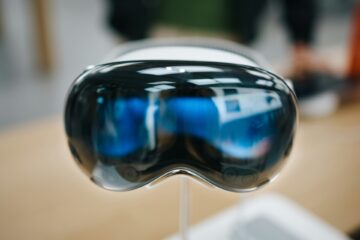Digital Twins Technology, have you ever heard? They are like virtual twins of real things, but they live inside computers. Imagine you have a toy robot. A digital twin of that robot would be a computer version that acts just like the real one.
Digital Twins Technology aren’t just for toys, though. They’re used in big industries like making stuff, keeping us healthy, planning cities, and even flying planes. Let’s see how they work and why they’re so cool!
What Are Digital Twins Technology?
Think of Digital Twins Technology as computer copies of real stuff. They’re made using special tools like sensors and smart software. These tools help computers understand and mimic how real things move, work, and behave.
How They Help Different Industries
1. Making Stuff: Companies can use digital twins to make better products faster. They can test things in a computer before making them in real life. This saves time and money.
2. Keeping Us Healthy: Doctors can use digital twins to understand our bodies better. They can make virtual models of organs and test treatments without doing real surgeries.
3. Flying Planes: Airlines use digital twins to keep planes safe. They track how planes work and know when something needs fixing before it breaks.
Why They are good?
1. Fix Things Before They Break: Digital twins help us predict when things might break. That way, we can fix them before they cause problems.
2. Make Things Work Better: By testing stuff in a computer first, we can make things work smoother and save energy.
3. Save Money: Fixing things before they break and making them work better saves a lot of money in the long run.

Challenges to Watch Out For
1. Keep Data Safe: With so much data floating around, we need to make sure it’s safe from bad guys.
2. Make Different Things Work Together: Sometimes, it’s hard for different computers and systems to talk to each other. We need to figure out how to make them play nice.
3. Learn New Skills: To use digital twins, people need to learn new stuff. It’s like learning a new language for some.
What’s Next?
As technology gets better, Digital Twins Technology will become even cooler. With faster internet, smarter computers, and better software, they’ll help us do even more amazing things. They’re like magic mirrors showing us a better, smarter world!
In the end,Digital Twins Technology are changing how we see and interact with the world around us. They’re helping us make smarter decisions, save money, and make the world a better place. So, the next time you hear about digital twins, remember they’re not just for robots—they’re for making our world awesome!
FAQs About Digital Twins
1. What exactly is a Digital Twins Technology?
A Digital Twins Technology is a virtual replica of a physical object, process, or system. It’s like having a computerized version of something real, mimicking its behavior and characteristics.
How areDigital Twins Technology created?
Digital Twins Technology are created using a combination of technologies such as sensors, Internet of Things (IoT) devices, data analytics, and artificial intelligence (AI) algorithms. These tools help capture and simulate the real-world behavior of the object or system.
What industries use Digital Twins Technology?
Digital Twins Technology is used in various industries, including manufacturing, healthcare, urban planning, aerospace, and more. They’re versatile tools that can benefit any sector where there’s a need to monitor, optimize, or simulate real-world assets or processes.
What are the benefits of using Digital Twins Technology?
Digital Twins Technology offer several benefits, including predictive maintenance (fixing things before they break), optimized performance (making things work better), cost savings (saving money in the long run), and improved decision-making (based on real-time data and simulations).
How do Digital Twins contribute to predictive maintenance?
By continuously monitoring the condition of physical assets in real-time, Digital Twins Technology can predict when something might break. This allows organizations to schedule maintenance proactively, reducing downtime and preventing costly failures.
Are there any challenges associated with implementing Digital Twins?
Yes, there are challenges such as data security and privacy concerns (keeping sensitive data safe), interoperability issues (making different systems work together), and the need for acquiring new skills and expertise to effectively use Digital Twins .
What does the future hold for Digital Twins Technology?
As technology continues to advance, it will become even more sophisticated and widespread. With improvements in connectivity, computing power, and AI capabilities, digital twins will play a significant role in shaping a smarter, more connected world.




